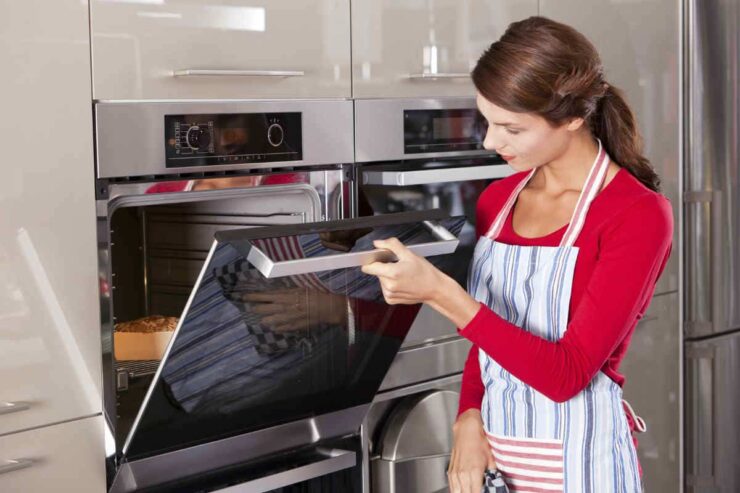Preheating an oven is an essential step in the cooking process, especially when it comes to achieving optimal results. Many recipes specify the temperature at which the oven should be preheated to ensure proper cooking, browning, and texture. Preheating allows the oven to reach a consistent temperature throughout, ensuring even cooking and reducing the risk of undercooked or unevenly cooked food. When it comes to preheating an oven to 400°F, there are a few tips to keep in mind to ensure the best outcome.
Preheating Methods

There are different methods you can use to preheat an oven to 400°F, depending on the type of oven you have. Here are a few common ones:
Standard Electric or Gas Ovens: For standard electric or gas ovens, the process is relatively straightforward. Simply set the oven temperature to 400°F and allow it to preheat. Most ovens have an indicator light that turns off when the desired temperature is reached. It’s recommended to wait for the indicator light to go off before placing your food in the oven.
Convection Ovens: Convection ovens have a fan that circulates the hot air inside the oven, resulting in faster and more even cooking. When preheating a convection oven to 400°F, it’s advisable to lower the temperature by 25°F. Set the oven to 375°F and allow it to preheat. The fan will help distribute the heat evenly, ensuring your food cooks uniformly.
Toaster Ovens: To preheat a toaster oven to 400°F, simply set the temperature dial to the desired temperature and allow it to preheat. It’s important to note that toaster ovens tend to heat up faster than standard ovens, so keep a close eye on the preheating process to avoid overcooking your food.
Preheating Time

The time required to preheat an oven to 400°F can vary depending on various factors, including the type and efficiency of your oven. As a general guideline, it typically takes around 10-15 minutes for a standard electric or gas oven to reach 400°F. However, it’s advisable to check the user manual of your specific oven model for accurate preheating times.
Convection ovens generally preheat faster due to the circulation of hot air. In a convection oven, preheating to 375°F should take approximately 8-10 minutes. Again, individual oven models may have slight variations, so consult your user manual for precise timing.
Toaster ovens, being smaller in size, tend to preheat faster than standard ovens. Preheating to 400°F in a toaster oven can take around 5-8 minutes. Keep in mind that toaster ovens may have variations in preheating times, so it’s always a good idea to monitor the process closely.
Tips for Preheating an Oven

Here are a few additional tips to ensure a successful preheating process:
Using an oven-safe thermometer is a useful tool to have when preheating your oven. It not only helps in monitoring the overall temperature of the oven but also allows you to track the internal temperature of your food. This is particularly important for dishes that require precise cooking temperatures, such as meats or delicate pastries. By placing the oven-safe thermometer in the thickest part of the food, you can ensure that it reaches the desired internal temperature and avoid the risk of undercooking or overcooking.
Additionally, it is crucial to maintain a clean oven for optimal preheating results. Regular cleaning helps remove any grease, food residue, or other debris that can accumulate over time. A clean oven ensures that the heating elements function efficiently and evenly distribute heat throughout the oven cavity. This not only improves preheating but also contributes to consistent cooking and baking outcomes.
Lastly, it’s important to consider the timing of your cooking or baking schedule. Once your oven has reached the desired preheating temperature of 400°F, it’s best to start placing your food inside immediately. Delaying the process significantly may result in uneven cooking or longer cooking times, as the oven temperature can drop slightly over time. By planning your cooking or baking activities accordingly, you can maximize the benefits of preheating and achieve the best possible results.
Preheating an oven to 400°F is a fundamental step in cooking and baking. By following the additional tips provided, such as removing oven racks, using an oven thermometer, avoiding unnecessary door openings, allowing sufficient preheating time, planning your cooking schedule, keeping your oven clean, and utilizing an oven-safe thermometer, you can ensure a successful preheating process. These practices will help you achieve consistent and delicious results in your culinary endeavors.
Other Preheating Temperatures

While preheating an oven to 400°F is commonly used in various recipes, it’s worth noting that different dishes may require different preheating temperatures. Depending on the recipe, you may need to preheat your oven to a lower or higher temperature. Always refer to the specific recipe instructions for the recommended preheating temperature.
Some common preheating temperatures include 350°F, 375°F, 425°F, and 450°F, among others. Each temperature serves a specific purpose and contributes to the desired outcome of the dish. Adhering to the recommended preheating temperature ensures that your food cooks evenly and attains the desired texture and flavor.
Conclusion
In conclusion, preheating your oven to 400°F is an important step in achieving successful cooking and baking results. By following the appropriate preheating methods, allowing sufficient time for the oven to reach the desired temperature, and implementing the suggested tips, you can ensure that your dishes are cooked evenly and to perfection. Remember to consult your oven’s user manual for accurate preheating times and temperature specifications. With proper preheating, you’ll be well on your way to creating delicious and well-cooked meals in your kitchen.

